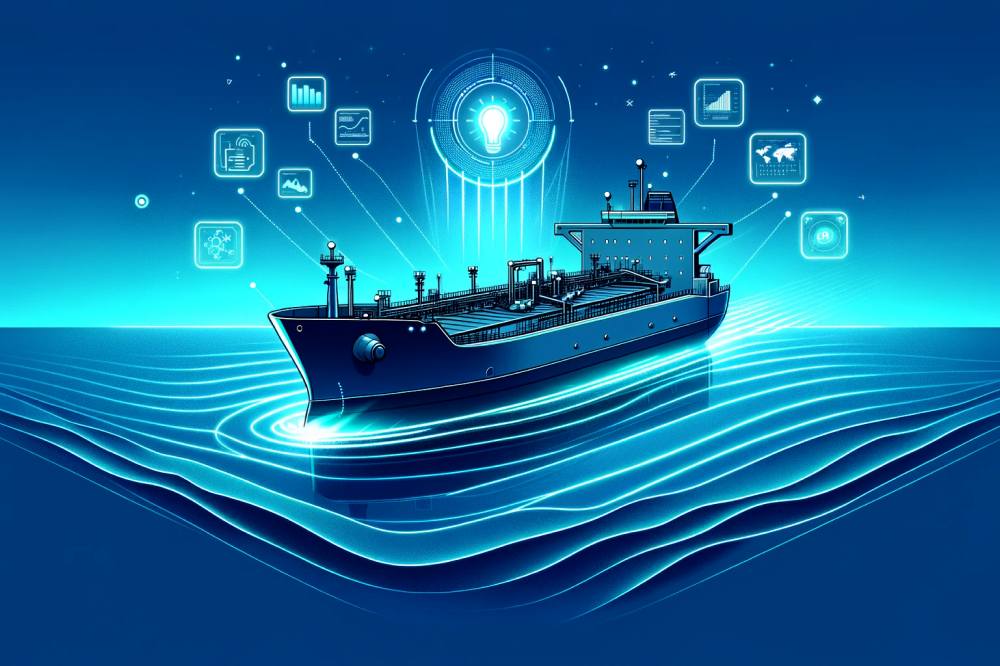
Sorry Sir, it looks like digital transformation is not one place but several, and mobile phones are the real game-changer
Mobile phones are the real game-changer....
The processing power of today’s smartphones is several thousand times greater than that of the computers that landed a man on the moon in 1969. These devices connect the majority of the human population, and the iPhone was born on the 29th of June 2007, so they are only twelve years old. By 2025, some 20 billion devices will be connected, almost three times the world population and these devices have already changed the world and they will continue changing the way we work completely.

A maritime office in your pocket
The mobile phones are changing the world very quickly, and most companies these days, understand they have to build their digital strategies by including these devices. In March 2020 according to Hootsuite, Mobile phones accounted for 52% of the web traffic (up 6,2 % from March 2019), while Laptops and desktops counted for 45,3 % of web traffic (down 3,7 % from March 2019). We expect many new B2B software applications designed and develop with a "mobile first" approach will be invented and launched in the years to come.
On vacation we get around with ride sharing booked through Uber and Lyft. We use local turist apps enable us to book rides from local boat owners to reach islands and turist adventures. We read email, connect with family and friends back home, check to make sure we turned the electricity off and water our flowers, make changes to our investment portfolio, and buy travel insurance and book hotel rooms. Maybe we’ll browse the Internet for personalised recommendations for movies or training videos or we get notifications that the family next door have kids in the same age as yours and they want to play. We can also create and continually update our vacation photo gallery—and search for photos in an album and make a few video calls or some old-fashioned phone calls. Then we go back to work—where embrace of digital is quite in a different mode. However, this will change, and the Covid-19 virus showed us the need for quickly being able to work remote, without investing in a lot of new hardware for all our employees.
However, unlocking an organisation’s digital potential can’t rely on software and devices alone, we also have to build a digital mindset where data, collaboration and how to cultivate our organisation’s key knowledge, are on our daily agenda.
Today the mismatch between most existing business models and digital future business models is huge and the environment is changing very quickly. Therefore, it is, more important than ever to “understand our company's key advantages” – the real reason for our existence , how we sort out our customers pains and why our customers prefer our services before our competitors, and how we believe these factors will develop in a digital landscape.
Many companies in the maritime industry operate or participate in digital R&D projects because they are curious to learn about how they can unlock their digital potential and establish some quick digital advantages, and to learn what their competitors are doing, but this might not be the right approach if we want to lead an organisation into a digital future. Creating a digital business model needs to start inside in our own organisations and we have to convert our business model into a digital future oriented business model ourselves, and before gaining any real digital value, we also have to digest the data accessibility and quality.
We all need data – but the bad news is that a machine can’t clean up our old data mess
Most organisations forget that an organisation’s digital transformation is not about copying others and be the fastest runner. It is about continuously collecting the right data for better decision-making, sharing and collaboration. When we have taken the time to build a data infrastructure and a mindset for understanding which data to share with whom, we can start using and reusing our data, analysing and improving our efficiency and improve our decision making. If we skip the boring part – and avoid collecting and structuring our data, we will only get “garbage in – garbage out” when we start using and analysing the data.
Building a digital infrastructure and establishing ownership of our key data, makes it so much easier to be independent of software vendors and contractors, protect our key knowledge and decide ourselves with whom we want to share our data, which is essential for building a digital value chain. Collecting and structuring data makes it possible to exchange data and reuse our data for different purposes.

However, the bad news is that data quality and data standards are not something we can take for granted, so building a digital infrastructure includes a lot of boring work like collecting data, data laundering, and data structuring in order to make it easy for machines to read, understand, and work with. So it might come as a surprise that a machine can’t clean up our data mess, we are the ones who have to tell the machine what we meant when we 10 years ago, decided to choose another way of naming an issue describing the same phenomena, instead of deleting data, establishing data definitions and protocols for the exchange of data and make these data clearly defined, readable and understandable for both new talents and machines.

Most digital strategies don’t reflect how digital is changing economic fundamentals, industry dynamics, or what it means to compete in a digital world. Many companies also tend to avoid doing the boring "data work" and instead diving directly into machine learning and A,I and build their analysis on “old data” stored in data silos while continue working as they have always done? It might give an organisation some quick gains/selling point, but regression analysis has been around for many years, and machine learning and algorithms might have some more data to work with, but if we don’t spend time on checking the quality of our data, the only real difference the organisation will notice is a lot of frustrated employees and increased capital spending on external ICT contractors, because we provide "garbage out" at an much greater phase than "the old days".
When we started Maritime Optima, we thought we could quickly offer some useful and affordable software, but instead, we ended up driving our employees nuts with collecting data, data laundry, establishing data formats and even manual data input. The though the established protocols on board the vessels for exchange of data like the NMEA 2000 protocols and the AIS provide a lot of error data, because the crew onboard don't add correct data.
According to McKinsey, companies should watch out for five pitfalls if they want successfully transform an existing business model into a digital business model.
1. Fuzzy definitions
When McKinsey have interviewed leaders about what they mean by digital, some view it as the upgraded term for what their IT departement does. Others focus on digital marketing or sales. But very few have a broad, holistic view of what digital really means for their companies.
2. Misunderstanding the economics of digital
One of the first concepts we learned in microeconomics was economic rent—profit earned in excess of a company’s cost of capital. Digital is confounding the best-laid plans to capture surplus by creating—on average—more value for customers than for firms. This is big and scary news for companies and industries hoping to convert digital forces into economic advantage.
3. Overlooking ecosystems
Understanding the new economic rules will move you ahead, but only so far. Digital means that strategies developed solely in the context of a company’s industry are likely to face severe challenges. Traditional approaches such as tracking rivals’ moves closely and using that knowledge to fine-tune overall direction or optimise value chains are increasingly perilous.
4. Over indexing on the "usual suspects"
Most companies worry about the threats posed by digital natives, whose moves get most of the attention—and the disruptive nature of their innovative business models certainly merits some anxiety. Excessive focus on the usual suspects is perilous, though, because incumbents are also digitising and shaking up competitive dynamics.
5. Missing the duality of digital
The most common response to digital threats we encounter is the following: “If I’m going to disrupt I need to create something completely new.” Understandably, that becomes the driving impetus for strategy. Yet for most companies, the pace of disruption is uneven, and they can’t just walk away from existing businesses. They need to digitise their current businesses and innovate new models.
So how to succeed in a digitalised landscape?
- Really understand your business, your key strengths, your customers and what your customers really appreciate about our services,
- Invest in a digital infrastructure and establish a data quality readable for machines (and new talented employees)
- Understand what kind of data you want to share, how to share the data and what kind of data we don't want to share.
- Selective sharing benefits ourselves, our partners and customers (strengthen our value chain)
- Develop a digital mindset and understanding in all parts of the organisation (get rid of buzzwords).
Remember implementing innovation might just be “Turning your existing knowledge into a digital framework that adds value from a customer’s perspective”.















